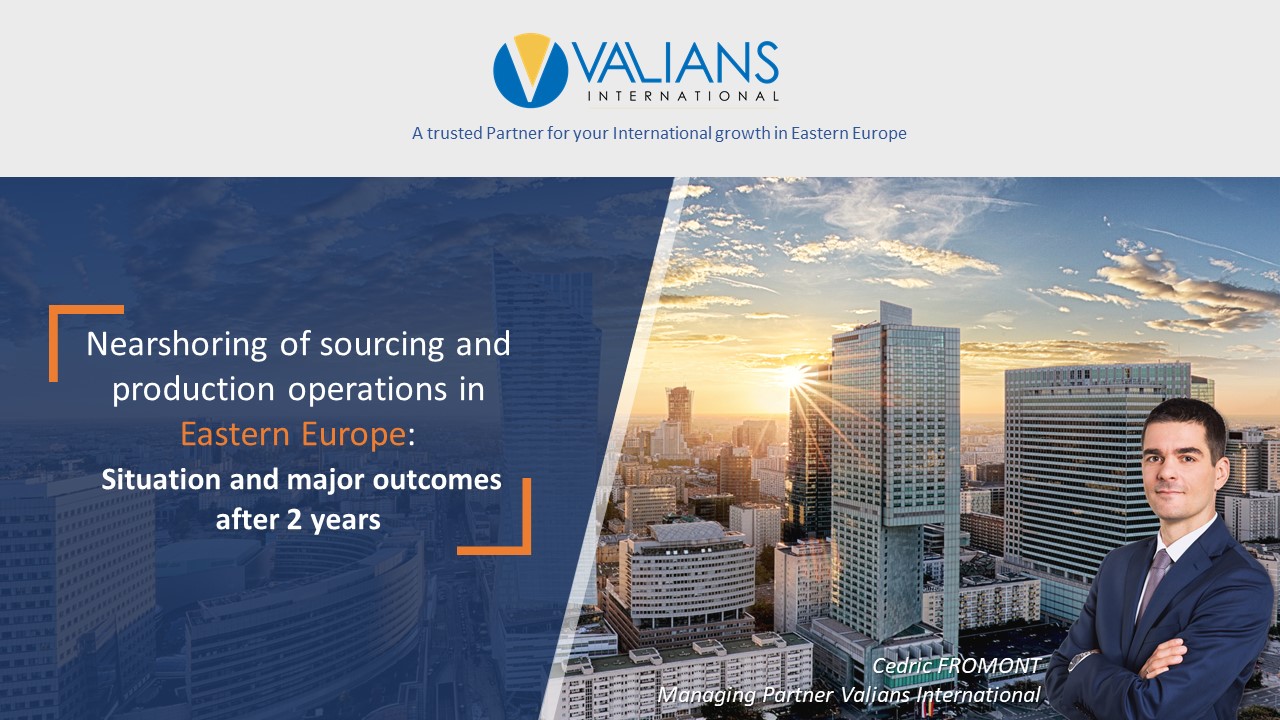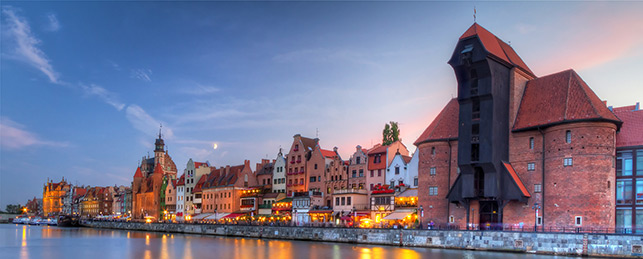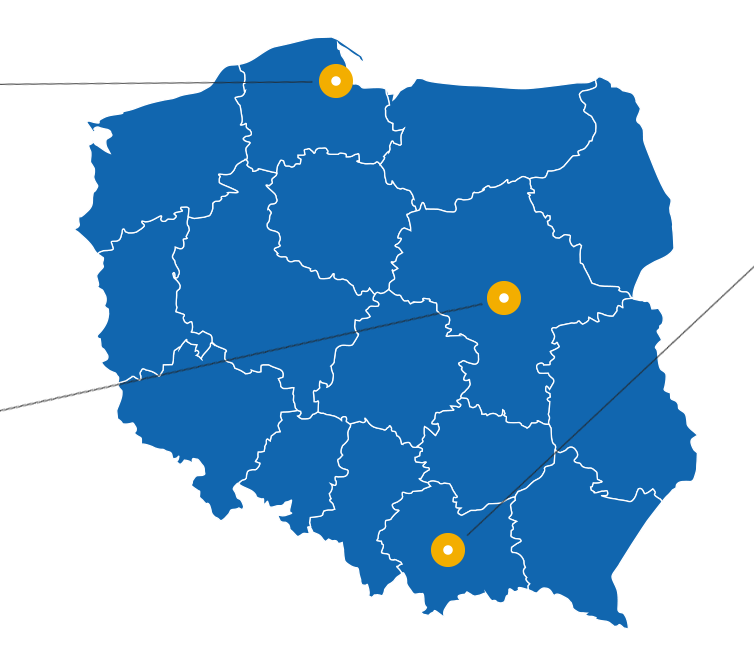The worldwide pandemic situation that started at the beginning of 2020 has accelerated a global trend that emerged few years earlier of nearshoring sourcing and production operations. This was the consequence of a strategy of ”derisking” supply chain disruption: higher costs from Asia, diversification of sourcing options, made in Europe awareness and better control on logistic costs and delivery time.
Companies from different industries (machinery, industrial equipment, retail, …) started to investigate other alternatives to China and Eastern Europe emerged as one of the major focus for European companies due to its closeness to European market with relatively low production costs.
What is the situation after 2 years? Is Eastern Europe an alternative to China? What are the main factors of success and major challenges in sourcing in Eastern Europe nowadays?
At Valians, we’ve been conducting sourcing and investment operations in Eastern Europe for over 25 years. From the beginning of the pandemic situation, we’ve been focusing our effort on ensuring access to reliable information and data in order to deliver short-time alternative to the Asian situation. This involved exhaustive identification of local suppliers, their access to raw materials, production capacities and availability, and also evaluation of best production location within the region via comparative investment and sourcing analysis.
Sourcing in Eastern Europe is a complex and quite different process than in China. 1st of all, when you consider sourcing in Eastern Europe, you need to consider sourcing in over 15 different countries of different sizes, industrial know-how and cultures. It involves allocating many resources in identifying and qualifying reliable suppliers. In many cases, suppliers are not identifiable at 1st sight (no major fairs like Canton, no catalogues of suppliers, very few and low matured sectorial associations).
2ndly, access to reliable information on suppliers is often quite limited. Without a local presence speaking local language and culture, it makes it very challenging to collect data.
3rdly, suppliers from Eastern Europe are in most cases of lower size and production capacities than in China. It means that volumes cannot easily be transferred from China to Eastern Europe with 1 supplier. Limited financial assets of suppliers will also often limit them to expand production capacities to reach high volumes expected. Eastern Europe is rather a complementary option to China in a strategy of derisk than a total replacement option in the short term.
During these last 2 years, our teams located in the different countries in Eastern Europe has been travelling intensively: Poland, Czech Republic, Hungary, Serbia, Romania, … to strengthen our position with our local network including public institutions – investment and export agencies. We edited several materials on sourcing opportunities per major industry in each country in Eastern Europe, and presented several webinars. During this period of time, we provided support to over 30 companies looking to nearshore production operations in Eastern Europe.
Major outcomes: flexibility and resilience of Eastern European Suppliers
In the period between 2020 and beginning of 2021, most of the projects were mainly disrupted by the Pandemic situation as many factories were on a hybrid phase (limited number of workers present on site). But in the meantime, many Eastern European suppliers managed to adapt to the situation and to rapidly be competitive towards new demands from European companies, thanks to the fact that they had production capacities available and to the competitiveness of local currency. Some very successful operations were conducted by our team, especially in the plastic and packaging industry.
From mid-2021, many Eastern European factories started to be at full capacity. In the meantime, worldwide situation on lack of raw materials and pressure on labour costs generated a need to identify new sources of suppliers.
Thanks to our long-standing experienced team of partners present in each Eastern European country, we managed to collect in-depth reliable sourcing opportunities and identify a very large database of potential suppliers in most of the major industries. This allows us to get fast access to potential sources of suppliers and get a comprehensive and comparative view on the different sourcing options for our clients in the whole region.
Like many companies in the world, Eastern European suppliers are directly hit by the current supply chain reshifting and limited access to raw materials. Nevertheless, Eastern European suppliers are in most cases very flexible and capable to adapt very rapidly to this environment. We see many suppliers willing and capable to reshift efficiently their production (automotive to consumer goods, finish goods to bathroom elements, …).We currently conduct successful operations for our clients in metal-working and aluminium parts, plastic consumer goods and home interior.
Keys to success
A successful nearshoring of sourcing and production activities in Eastern Europe should be based on:
– Being aware of the diversity of the industrial landscape of each country
– Not comparing to the ”traditional” sourcing process from China
– Focusing on generating successful landed costs operations (included direct and indirect costs), and rather on small volumes to start with, as a complement to China
– Willing to allocate time and resources on identifying and qualifying the right suppliers
– Going through a preliminary comparative sourcing analysis between the different countries in Eastern Europe to focus on most promising wins
– Being supported by local experts on the ground having already a deep knowledge of industrial landscape and database of suppliers and with the capacity to coordinate the project in the whole region
Trends and prospects
The current situation in Ukraine and Russia will generate new challenges for Eastern European suppliers in gaining access to raw materials and shows once more the importance of diversifying its supply chain options. Eastern European suppliers show strong resiliance to external factors and their capacity to find short term solutions will definitely be an advantage in the current context.
Additionally, we currently see opportunities for strategic investment through acquisition of local suppliers in the region who are often willing to grow but usually lack of financial capacities. This solution enables foreign companies to secure production operations within Europe, using competitive and reliable existing production capacities.
click here for the pdf version : Nearshoring of sourcing and production operations in Eastern Europe: Situation and major outcomes after 2 years PDF



 (0048) 12 631 12 89
(0048) 12 631 12 89




 (0048) 12 631 12 89
(0048) 12 631 12 89

